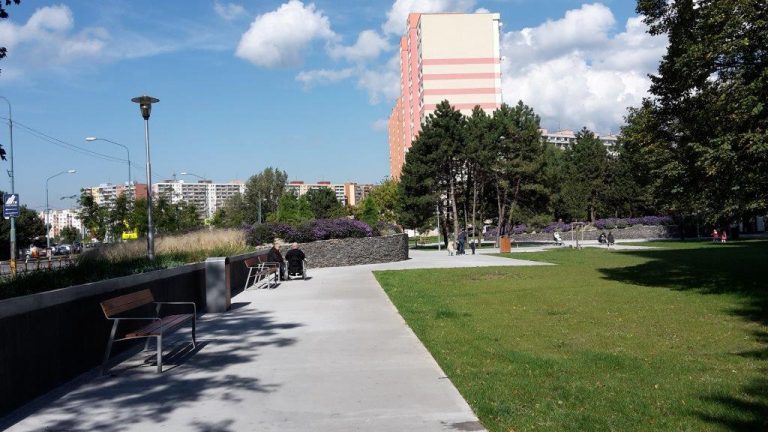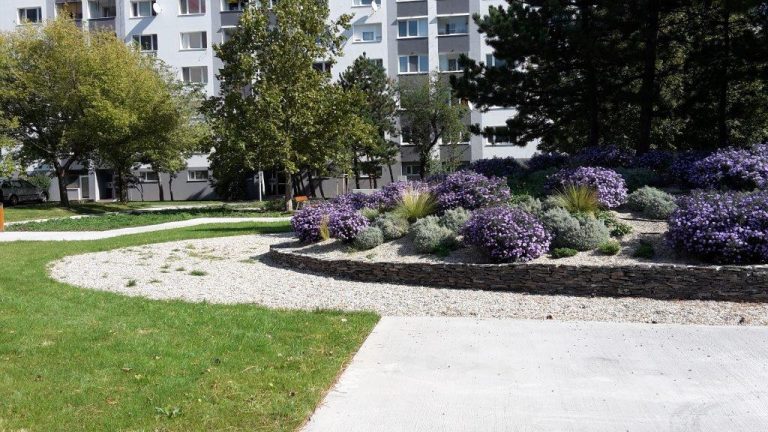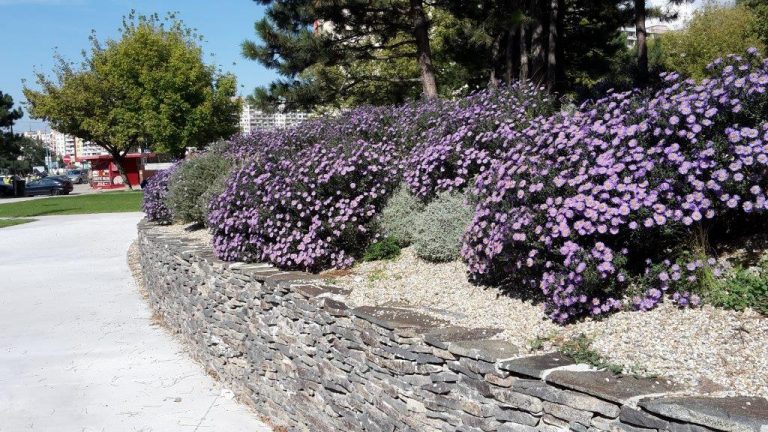After almost a year of necessary preparations (plan, architectonic proposal, complex project documentation, and tender) Petržalka city district has commenced the revitalization of Námestie Hraničiarov square. The architectonic proposal of the project was based on proposals from students with the topic of “Takto Petržalku vidím ja” (this is how I see Petržalka). The project gave the project architecture a more modern and minimalistic shape, with the rectangular form of the pavement and the organic beauty of the greenery. The goal of the project and its implementation is to improve the aesthetic appeal of the space by introducing natural elements, improve the usability of the park for the residents, and to create a climate oasis on this much-frequented square. The park solution respects the current tree structure and pedestrian pathways on the square as much as possible.
The park reconstruction unified the surfaces of the pavements and improved their quality. The number of paved roads was reduced, creating a space for more greenery. Continuous passage through the park is provided by wider pavements. There are narrow pavements leading to pleasant nooks, affording a secluded place for relaxation or contemplation. The whole concept is based around retaining as much of the original greenery as possible, augmented by more than 4,500 new perennial plants and decorative grasses, nearly 3,700 ground-covering woody plants, and up to 11 new large woody plants. We created whole islands of flourishing flowers, providing a significant seasonal character to the park. Seventeen new benches and new garbage cans were installed. The original grassed areas were revitalized, opened up, and complemented by adding new seeds.
As part of the revitalization, a new automated watering system was installed, which will ensure that all the plants have enough water. In order to reduce the maintenance costs associated with regular watering during the hot summer months, a well was dug to supply water to the watering system.
One of the priorities of the park reconstruction was its environmental benefit. Rainwater from paved roads leads the water into the open areas by means of appropriate gradients, where it seeps into the soil. Hence, the rainwater stays where it falls, the water deficit of the area is reduced, the sewerage system transports less water, and fewer costs are entailed in transporting rainwater from the area.


